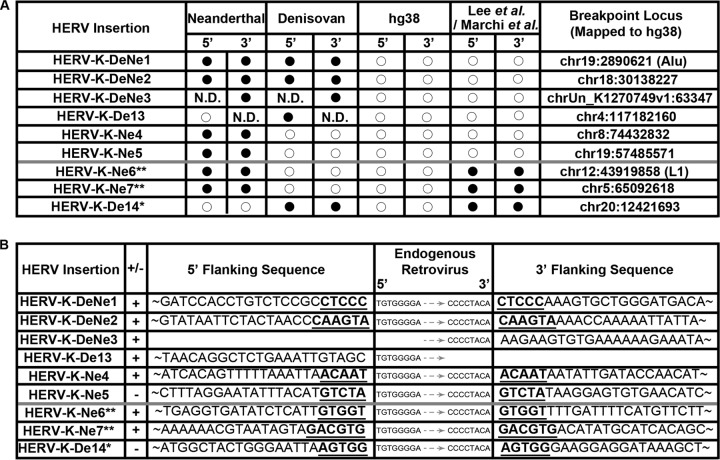FIG 1.
(A) Distribution of the archaic hominid insertions within Neanderthals and Denisovans, compared to hg38 and the HERV-K elements recovered in previous studies (6–8). Filled circles denote that an element is present, while open circles denote absence. N.D. indicates that there were no sequence data available. The loci of corresponding empty preintegration sites, mapped to hg38, are also given. If this occurred within a repeat, the class of repeat is listed in parentheses. Single asterisks adjacent to the last three viruses represent those elements that were also recovered in some modern humans by Lee et al. (7), while double asterisks represent those viruses also recovered by Marchi et al. (8). The distribution of these three elements is likely explained by ancestral polymorphism. (B) HERV-K(HML2) flanking sequences for the nine endogenized retroviruses identified here. The 5′ and 3′ flanking regions are shown, together with the proximal and distal ends of the HERV LTR. Nomenclature follows the convention and numbering set by Agoni et al. (5). Reads where flanking sequence was extensive were truncated and are provided in full in Table S1 in the supplemental material. + or − denotes the native orientation of the read against hg38. For proviruses for which both 5′ and 3′ flanks were obtained, the matching TSD sequence is underlined and in boldface.

